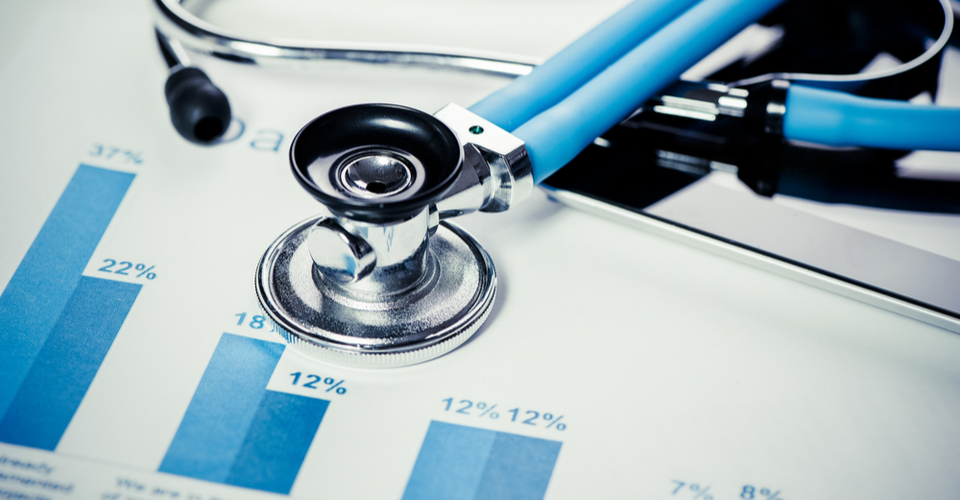February isn’t just about hearts for Valentine’s Day. It’s also an awareness month that brings heart health front and center to the national conversation about healthy living and mortality. As usual, cardiovascular disease, heart disease, stroke, and sudden cardiac arrest (SCA) play major roles in understanding the state of health in the U.S.
Of particular interest to the emergency care training industry, the 2020 Heart Disease and Stroke Statistical Update reveals that:
-
On the basis of data from 2005 to 2014, it is estimated that 605,000 Americans will have a new heart attack this year, and 200,000 will have a recurrent attack. The average age at the first heart attack was 65.6 years for males and 72.0 years for females.
-
Approximately every 40 seconds an American will have a heart attack.
-
Someone in the US has a stroke every 40 seconds on average.
-
In 2017, stroke accounted for about 1 of every 19 deaths in the US.
-
In 2016, the number of any-mention* sudden cardiac arrest deaths in the US was 366,494.
-
According to data accessed in 2018, the majority of Out of Hospital Cardiac Arrests (OHCA) occur at a home or residence (69.8 %). Public settings (18.8%) and nursing homes (11.5 %) were the second and third most common locations of OHCA.
-
According to data accessed in 2018, OHCA was witnessed by a layperson in 37.7% of cases and by an EMS provider in 12.7% of cases. The greatest number were unwitnessed in 49.6% of the cases.
*“Any-mention” death means that the condition was nominally selected as the underlying cause or was otherwise mentioned on the death certificate.
The report also indicates we still have a significant road ahead in layperson CPR training:
-
The median annual CPR training rate for US counties was 2.39% based on training data from the AHA, the American Red Cross, and the Health & Safety Institute, the largest providers of CPR training in the United States.
-
Training rates were lower in rural areas, counties with high proportions of black or Hispanic residents, and counties with lower median household income.
-
Prevalence of reported current training in CPR was 18% and prevalence of having CPR training at some point was 65% in a survey of 9,022 people in the United States in 2015.
-
Comparatively, those with prior CPR training include 90% of citizens in Norway, 68% of citizens in Victoria, Australia, 61.1% of laypeople in the United Kingdom, and 49% of people in the Republic of Korea, according to surveys.
You can access and download the 2020 At-a-Glance Fact Sheet and the entire report here.
One thing that never changes: heart attacks and SCA can happen to anyone, anytime, anywhere, making trained bystanders in our workplaces and communities a critical part of the care for these patients in these instances.
Heart Attack and SCA: Are They the Same?
It’s easy to confuse “heart attack” and “sudden cardiac arrest,” but it is critical to understand that they are two very different situations.
Cardiac arrest is the loss of the heart’s ability to pump blood to the body. The most dramatic occurrence, sudden cardiac arrest, can happen with little or no warning. Victims abruptly become unresponsive and collapse. Abnormal gasping can occur, or breathing will stop completely.
The most likely cause of sudden cardiac arrest is an unexpected disruption to the heart’s electrical system, in which normally organized electrical pulses within the heart become disorganized and a chaotic quivering condition known as ventricular fibrillation occurs. Blood flow to the body, along with the oxygen it carries, stops. Without blood flow, brain damage occurs rapidly and quickly leads to death.
In cases of suspected SCA, cardiopulmonary resuscitation (CPR) is the immediate treatment. CPR allows a bystander to restore limited oxygen to the brain through a combination of chest compressions and rescue breaths.
However, CPR alone is not enough. The most effective way to end fibrillation is defibrillation, often with an automated external defibrillator (AED). A controlled electrical shock is sent through the heart to stop ventricular fibrillation, allowing the heart’s normal electrical activity to return and restore blood flow.
For more information on these easy-to-use devices, download our AED infographic by clicking the button at the end of today’s blog post.
Comparatively, acute coronary syndrome (ACS), often described as a heart attack, can occur when there is reduced blood flow to the tissues of the heart, such as when a clot or heart disease obstructs or narrows a coronary artery. Without adequate oxygen, heart tissue surrounding the artery will die, typically resulting in pain, severe pressure, or discomfort in the chest. A person may also describe indigestion, weakness, shortness of breath, or nausea. The person’s skin may become pale, cool, and sweaty.
Uniquely different from SCA, a person experiencing ACS is awake and does not require CPR, although it is a serious medical condition that can quickly get much worse.
We’ll take a closer look at ACS and the appropriate emergency care response in an upcoming blog post.
For our readers outside the emergency care training field: With a whopping 69.8% of SCA incidents occurring in the home, are you ready to respond to your loved ones with the lifesaving skills of CPR? Those precious minutes you provide could buy your family member the time they need for survival until the arrival of EMS. Make 2020 the year you take that first aid, AED, and CPR class. Click here to find an ASHI or MEDIC First Aid Training Center near you.








.png?width=600&name=HSI-CTA-EmergencyCareTraining%20(1).png)











Comments